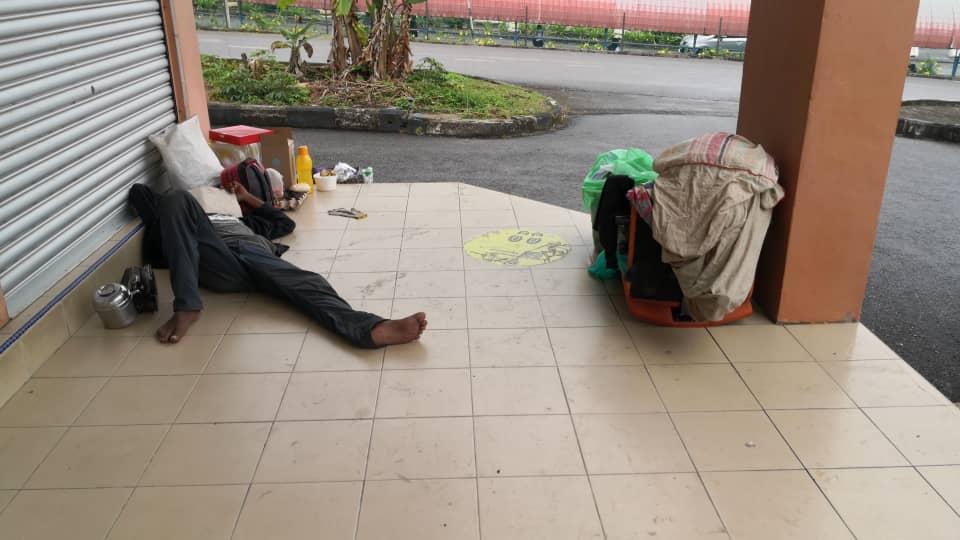In Sarawak, no solution in sight for the homeless and mentally ill
The problems often overlap, but not the agencies responsible.
Just In
In the small town of Bintulu in Sarawak, a group of men roam about, some scavenging and others wandering aimlessly through the streets.
When night falls, they lie down on pieces of cardboard laid out on sidewalks and in alleys. Sometimes, they sit on the curb, begging for alms with their belongings tied up in bundles beside them.
This is by now a familiar sight for residents in the oil and gas town.
Many of these homeless people came from the countryside in search of work. In the early 1980s, they crammed into a big squatter settlement that grew in the middle of the town. In 1987, though, the settlement was razed to the ground and the squatters scattered.
The pandemic years were especially difficult for those who sleep rough, some of whom have taken to behaving more aggressively to the people around them. Half-naked, they wander through the streets talking to themselves, some of them carrying parangs or knives.
With no facilities available to them, they relieve themselves on the streets, wherever they happen to be.
Sometimes, they also become violent.
“Early this year, a driver was randomly beaten up by a homeless man with a piece of wood,” activist Francis Ngu told MalaysiaNow.
“He hit him as he passed by the road.”
Mentally ill
Incidents like this have fuelled concerns about a rise in the number of mentally ill people among the homeless.
According to Ngu, members of the public normally inform the welfare department about cases of people living on the streets.
However, he said no long-term action has been taken.

Sarawak Welfare, Community Well-Being, Women, Family and Childhood Development Minister Fatimah Abdullah acknowledged an increase in the number of homeless and mentally ill people in Bintulu.
Throughout the state, Bintulu has the highest number of such cases on record at 48. It is followed by Kuching (31), Sibu (28), Miri (24) and other cities and towns.
As of December last year, a total of 158 homeless individuals had been reported in Sarawak as a whole.
Ministry studies on the cause of homelessness show that 38% of cases are due to family problems, 33% have mental health issues, 12% have nowhere to stay, 10% are alcoholics, and 5% are jobless.
But while the welfare department is responsible for taking the homeless into custody, the situation becomes more complicated when mental illness is involved.
“Cases of mental health problems are under the purview of the health ministry,” Fatimah told MalaysiaNow.
“The welfare department cannot provide the proper care and support for the mentally ill. We don’t have the institutions, and the officers are not trained in this area.”
Treatment
In Kuching, there is one facility dedicated to the care of mental health patients – Hospital Sentosa.
According to the Sarawak Mental Health Association, though, treatment is available for mental health problems at all government health clinics and hospitals in the state.
Its president Dr Ismail Drahman said Sarawak had come a long way in this regard.
“Twenty years ago, this service was quite lacking and we did not have enough members,” he said.
“But now, it is everywhere.”
Affordability is also less of a problem for low-income families as they are charged only a few ringgit for registration.
“Either RM1 or RM5, and if they can’t afford it, they don’t have to pay,” Ismail said. “So the cost of treatment is free.”
At non-specialist hospitals, patients are referred to institutions with psychiatrists.
“The disease can then be stabilised to prevent them from becoming confused or causing problems to the public or their families,” Ismail added.
Nevertheless, he said, mental health facilities in Sarawak are in need of an upgrade.
“In Bintulu and some other areas, we do not have the facilities to place more aged patients because the hospital is to provide acute treatment.”
Once the patients are stabilised, he added, they are released to their families who must then monitor their health and provide care for them.
But there is always the possibility of a relapse.
Fatimah said the welfare department has been trying to reach as many homeless people as possible, adding that it was important to identify the cause of homelessness and to then work from there.
“Sometimes the health department tells us that a person has already been treated and given medication,” she said. “So where should they go?”
For her, this is a gap that must be addressed by the ministries in tandem with NGOs and the patients’ families.
“We need to work together,” she said. “We have to sit down together to see if we can find a way out.”
Subscribe to our newsletter
To be updated with all the latest news and analyses daily.
Most Read
No articles found.
